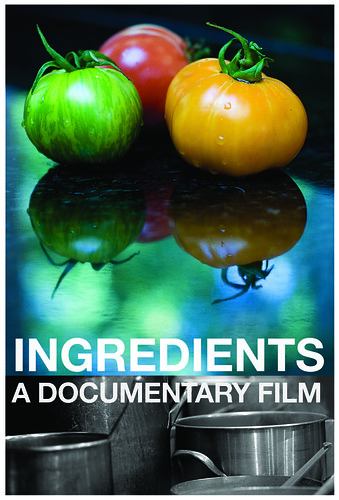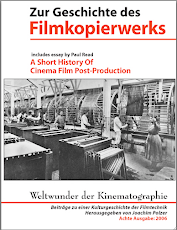in Zusammenarbeit mit der Berliner Community des SLOW FOOD Movements: http://slowfood-berlin.de/
Bitte beachten Sie auch die Website von FOODWATCH in Berlin: http://foodwatch.de/
 Film-Nr.: 242
Film-Nr.: 242Vorführungstermin: Donnerstag, 13. August 2009, 18.30 Uhr (Hauptfilm) [VN24]
Themenschwerpunkt: Yes we can! — Obamas Amerika (5) | Und wer ist Ihr Landwirt? — Local Food Movement (2)
Englischer Titel: Ingredients
Originaltitel: Ingredients
Deutscher Titel: Zutaten: Was Nahrung zum Lebensmittel macht
Herkunft: USA 2009
Laufzeit: 67 min.
Sprachfassung: Englische Originalfassung
Regie: Robert Bates
Produzent: Brian Kimmel, Debra Sohm Lawson
Schnitt: Robert Bates
Kamera: Brian Kimmel
Musik:
Sprecher: Bebe Neuwirth
Produktion: Optic Nerve Production, Portland (Oregon)
URL Film-Homepage:
Premierenstatus: Weltpremiere

Kurzinhalt: Das Verlangen nach „nahrhaften und gesunden Lebensmittel“ geht über die Qualität des „organic“ (bei uns „BIO“) hinaus; denn die schiere Größe des landwirtschaftlichen Ökonomie-Sektors auf dem nord-amerikanischen Kontinent verlängert nicht nur die Dauer von Transportwegen. Die politisch gewollte Industrialisierung mit ihren Riesen-Strukturen hat zudem die Qualität und Sicherheit von Lebensmitteln in den USA drastisch gesenkt. Bakterienverseuchungen von Spinat, Tomaten und Fleisch sind an der Tagesordnung. Das „Local Food Movement“ rückt damit immer stärker ins Bewusstsein, verbunden mit der Frage: "Und wer ist Ihr Landwirt?" — Die Erzeugung von Lebensmitteln darf keine Angelegenheit von Anonymität sein; sie wird zunehmend eine Frage des persönlichen Vertrauens.
Trailervideo: http://blip.tv/file/2247653 + http://www.youtube.com/watch?v=A_s8o4T-5ZM&feature=channel_page
Englische Synopsis: INGREDIENTS explores a thriving local food movement as our world becomes a more flavorless, disconnected and dangerous place to eat.
Englische Werkbeschreibung: American food is in a state of crisis. Questions of food safety are in the news with alarming frequency. Obesity and diabetes are on the rise, food costs are skyrocketing, family farms are in decline and our agricultural environment is in jeopardy. Over the past generation, consumers have become increasingly disconnected from the source of their meals as nearby farms offering fresh seasonal foods have given way to processed foods shipped from distant places. People living in or near cities are literally losing sight of where their food comes from as the average meal now travels over 1500 miles to reach our plates. Within the past few decades, however, a growing number of people around the country have been engaged in a movement to put good food back on the table. Across the country, people are reclaiming their right to know who grows their food and where it comes from. The pleasure of eating fresh, seasonal foods has given life to farmers markets from New York to the Pacific Northwest. By selling directly to local customers, farmers earn more money and are able to stay on their land while consumers are now realizing they have a safe, healthy and desirable option of what to eat. A feature-length documentary film narrated by Bebe Neuwirth, INGREDIENTS documents both the challenges and opportunities presented by a locally based food economy. At the vanguard of this story are the chefs and farmers whose collaborative relationships have greatly elevated the quality and flavor of food now available to us. They are joined throughout the film by nutritionists, authors and economists who describe the community-wide benefits of this alternative food model. INGREDIENTS takes its inspiration and structure from the four seasons, each season offering an in-depth exploration of the challenges faced by the local food movement. The film opens with the cold blue light and barren trees of a winter farm in Oregon. Anthony and Carol Boutard are harvesting an unexpected abundance and diversity of vegetables. Beets, brussel sprouts and braising greens are fresh and at their sweetest. Inside their warm farmhouse, they join restaurant owner and chef Greg Higgins in a meal of wood-fired pizzas and cassoulet. They discuss their concern over the state of food in America. Our narrator then expands on the idea that this concern over the health, safety and cost of food is nation-wide; and that across the country, communities of farmers and chefs are responding with small, diversified and successful food systems. These communities are allowing consumers to regain knowledge of the origins of their food and the lost art of eating seasonally. Spring, with its warming weather, illustrates the importance of community.


Chef Alice Waters of Chez Panisse in Berkeley, California describes how she was inspired by the simplicity and pleasure of European food culture where direct relationships between chefs, farmers and consumers are commonplace. We learn from sheep rancher John Neumeister how a phone call from Alice Waters transformed his business. By selling directly to chefs and bypassing commodity markets he was able to take control over his own livelihood. As his sheep graze on verdant spring grasses, John goes on to describe a healthy ecological system where grass, ducks, sheep and his family live in a mutually beneficial environment. The long daylight hours and quickly ripening foods of summer underscore the theme of growth. The skyscraper canyons of Manhattan are home to thriving farmers’ markets, where farmers and chefs collaborate in the most urban of environments. In Harlem, farmer Jean Paul Courtens is dropping off fresh, seasonal produce to low-income families through his community supported agriculture (CSA) program. In Ohio, the Jones are a third-generation farming family. Twenty years ago, they were growing conventional crops and found themselves facing bankruptcy. With nothing left to lose, they started to grow exotic vegetables, heirloom tomatoes and micro greens. They quickly recognized an emerging market for specialty foods and now, restaurants chefs wanting to buy food from the Jones’s farm are put on a waiting list. The Jones’ success starkly contrasts with the reality that unprecedented urban growth has put many less established farmers in peril. As the days of cheap land and cheap fuel are behind us, the film explores the daunting, nation-wide economic need for owning and preserving farmland close to where people live. It also reveals the challenges posed by the fact that prime agricultural land is increasingly being used to either build houses or to grow fuel crops such as corn for ethanol. The turning leaves of fall represent an opportunity for change. We see urban school kids on a farm tour, discovering where their food comes from as we hear them crunching on freshly dug beets and carrots. Considered by many to be the godmother of the local food movement, Joan Dye Gussow describes the obstacles that this movement must overcome in the near future. An author, nutritionist and professor at Columbia University, her work illustrates how the food we eat is inextricably linked to our health and the health of the broader community. The film concludes with a brief reprise of winter where our farmers and chef from the beginning of the film create and share a meal together. Reflecting on the challenges and opportunities that lie ahead, their conversation underscores the role that the consumer can play in creating viable local food systems. It is in stark contrast to our bleak economic, health and environmental news that this film offers a solution. It shows how food can become a substantive and enjoyable way to address a host of complex issues. INGREDIENTS empowers and sparks the joy of discovery in creating a healthier, more sustainable model for living and eating well in a world in need of balance.
GLOBIANS DOC FEST BERLIN
August 12 - 17, 2009
Kino Toni, Antonplatz












Keine Kommentare:
Kommentar veröffentlichen
Hinweis: Nur ein Mitglied dieses Blogs kann Kommentare posten.